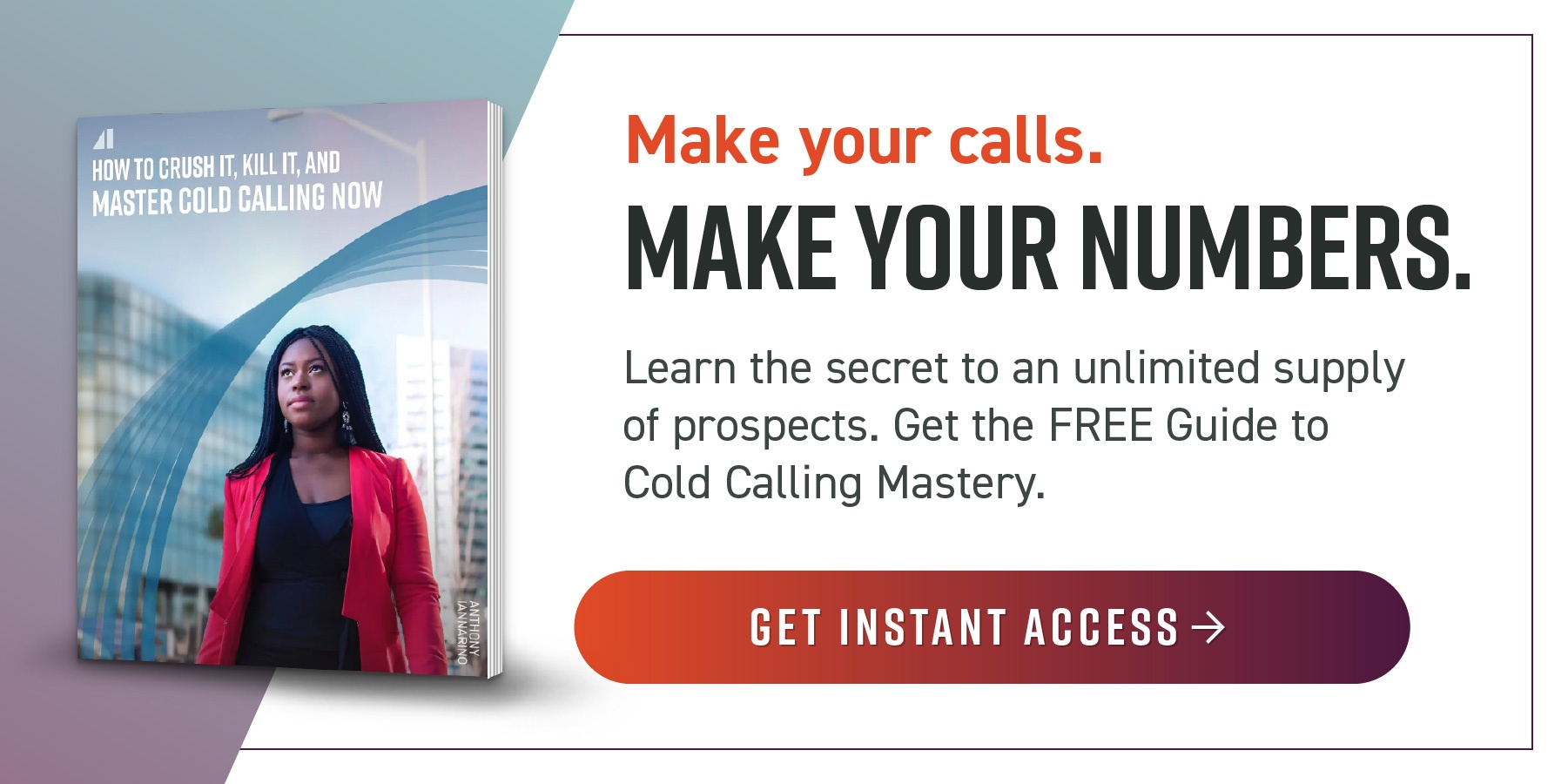Sales prospecting is essential, but it can be challenging. Surveyed sales professionals even ranked prospecting as more demanding than closing. So, do you need a sales prospecting process, or can you just follow your gut and see what sticks?
Have you ever been driving in a remote area and had your navigation system conk out on you? Suddenly, you’re driving blind, unsure of which way to turn—maybe even unsure of when the next turn is coming. Selling without a proven sales prospecting process can feel a lot like that. Without a road map, your team will have a hard time knowing how to steer their prospects toward closing, and their sales conversations might veer off course.
I have a foolproof, seven-step sales prospecting process that I’m going to share with you in this post. Once you’ve finished reading, you’ll be ready to close any deal.
What is a Sales Prospecting Process?
I’m excited to dive into my seven-step sales prospecting process, but before I do, I want to talk about sales prospecting processes in general for a moment.
What is sales prospecting? Sales prospecting occurs at the beginning of the sales funnel. Sales professionals find, track, and communicate with potential customers in the hopes of gaining a meeting, creating an opportunity, and eventually converting them into a client.
Too many sales leaders and sales managers permit their sales force to pursue meetings without giving them any real guidance. You improve your results by providing greater direction on prospecting, including a sequence of communication that improves results and allows the salesperson to capture mindshare by providing insights. You need to align your team and provide your sales team with a road map that leads to success, etc.
I spent more than six years prospecting every day. Eventually, my success as a salesperson resulted in being promoted to Vice President of Sales. The new role required me to help my team prospect, create new opportunities, and win their business. Producing the results we needed meant focusing on companies that spent millions of dollars in our category. Because all of these companies were already working with our competitors, it was difficult to get a meeting, the starting point for displacing our competitor.
Prospecting is such an important part of the sales process that I have an entire segment on prospecting in my Sales Accelerator training program.
In short, to level up your prospecting efforts, you’ll need a proven process. Without further ado, let’s dig into my seven-step process for incredible success with sales prospecting.
1. Define Your Stages
Step one of your new sales prospecting process is to define your stages. Work with your marketing team to establish the difference between leads, prospects, opportunities, etc.
One sales organization was struggling to create net new revenue. The leaders were holding “opportunity reviews,” and each week, their salespeople would share the name of a new opportunity. When I asked them to explain why the client was interested in changing what they are doing, the salespeople revealed they had never secured a meeting with the company.
You might take it for granted that your team knows how to categorize the status of the companies they are pursuing. The salesforce above had a list of leads, possessing Names, emails, and phone numbers. To convert a lead to a prospect, the salesperson has to engage the contact in a conversation that proves the client can benefit from what the salesperson sells. Only when the contact agrees to pursue better results does the prospect become an opportunity.
Ensure you’re marking contacts with these stages appropriately and consistently to set yourself up for prospecting success.
2. Do Your Homework
Step two is to research your prospect. Here at The Sales Blog, we believe in the concept of “minimum viable research” when prospecting. It’s best to build a list of targets of known users of what you sell, eliminating companies and industries that don’t need what you sell. You need a list of contacts that care about the better outcomes you can help deliver. You need their contact information and a theory as to why your prospective client should change.
Next, ask yourself, are you speaking to the Decision Maker? In the past, you would target the decision-maker. Now, however, you need decision-makers. This change in how buyers buy makes it easier to get a meeting with a stakeholder, followed by the challenge of building consensus. With a powerful theory as to why the client should change, you can start the process of creating an opportunity. Be careful not to over-research—do the right research. You can always do more research on the company and the stakeholders you are meeting once you have a confirmed date on your calendar.
3. Use Available Tools
To prospect effectively, you’ll want to use all the tools you have at your disposal. Track your prospects in your CRM. The CRM is the record of your communications with your prospective clients.
Keeping notes on who you called and the result of the conversation can help you adjust your approach over time, eventually booking a meeting. If you are pursuing a number of stakeholders, these notes will help you know who you talked with and how long it’s been since you communicated with them. Prospecting is an exercise in persistence. Additionally, use sequences for nurturing emails and other similar communications. The reason you use a prospecting sequence is that it allows you to be patiently and professionally persistent. It also creates an opportunity to provide a preview of the “why change” theory, gaining some mindshare and increasing your chances of commanding a meeting. We call these communications, “no ask” communications, because you are providing something of value without asking for a meeting.
4. Personalize Your Approach
Effective prospecting is never generic. Approach your prospect and provide value upfront. The most important variable when it comes to prospecting is trading enough value to command a meeting. Your pitch cannot be about you sitting down with them to talk about your company or your solution. Instead, the value proposition should be about how to improve the client’s results.
Before making the call, know why you’re calling (what you hope to achieve in this one call), and how you plan to accomplish your goal for this specific prospect. For some sales organizations, the intention is to have a discovery call. Others may need to schedule a face-to-face meeting. If you need a meeting, you’ll want your team to avoid doing discovery on a cold call.
Gear the conversation to their pain points and struggles. Your team will do well to suggest that they are going to be able to provide a conversation that will leave the client better prepared to tackle their challenges and overcome the obstacles that prevent the better results they need.
5. Find The Right Fit
You don’t want to find just any prospects: You want to find the right ones. Don’t pursue poor-fit customers.
In staffing, I learned to never call on companies that didn’t already use temporary staffing. Occasionally, a new salesperson is frustrated when every company they called already had a service. They would ask why it wouldn’t be better to call on companies that didn’t use temporary employees. The question answered itself. There is no reason to waste time on companies that don’t benefit from what you sell, or who don’t value how you produce results.
Sales is a two-way process, if the customer isn’t a good fit for your company, their business could end up being detrimental in the long run. We are not big on qualifying, but if the company isn’t a fit, you should disqualify them and ensure your team spends time with prospects that fit.
In short, don’t be afraid to prune poor-fit customers: It makes a clearer pathway for the best-fit ones.
6. Close The Sale
After you’ve followed steps one through five, you should be set up for success in closing the sale.
Closing is one of the most difficult parts of selling, but by following the above steps you should be able to create an opportunity for an easier close. The best way to make closing easier and faster is to facilitate your contact’s buyer’s journey, helping them to have the conversations they need to have to make a good decision and improve their results.
7. Iterate and Optimize
You may think the close is the end of your sales prospecting process , but you wouldn’t be quite right! Completing the prospecting process is only the beginning. You’ll want to hone your process over time to make it as effective as possible.
One of the best ways to use your time as a sales leader is to iterate and optimize your prospecting approach, as well as the interactions your team has with their prospective clients. Over time, you can improve your team’s approach and improve their effectiveness.
Keep an eye on your metrics and be ready to tweak your process to optimize your results and team performance.
Crushing the Sales Prospecting Process
Following this sales prospecting process will give your team the guidance they need to increase their close rate with best-fit customers. Still, sales is about more than processes and guidelines: It’s about your mindset. If your sales team doesn’t have confidence, persistence, accountability, and more, you’ll still find it hard to send your close rates into the stratosphere.
That’s where an incredible sales training program comes into play.
My Sales Accelerator takes a holistic approach to the sales training process. We cover technical skills like sales prospecting processes, cold calling scripts, and presentation skills. Alongside those valuable lessons, we also work to change your sales team culture from the inside out, helping salespeople find and nurture the soft skills they need to close any deal. Check out the Sales Accelerator today to see how I can transform your team into a deal-closing machine.















